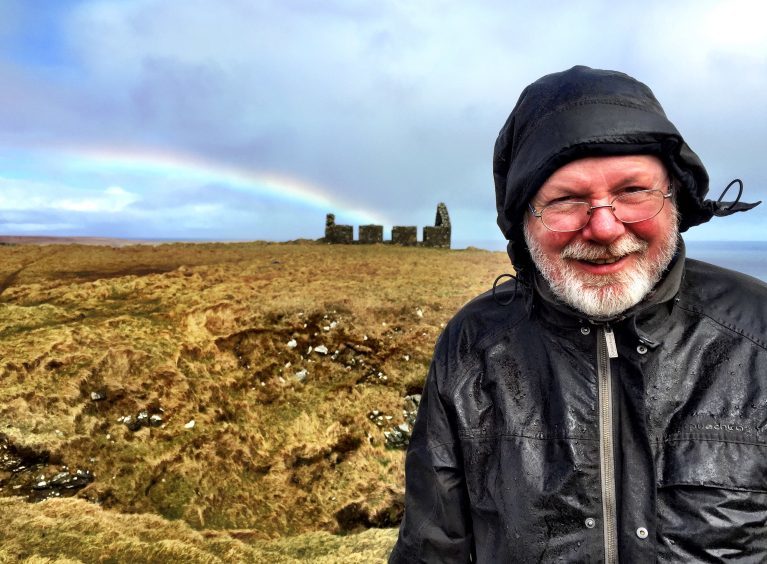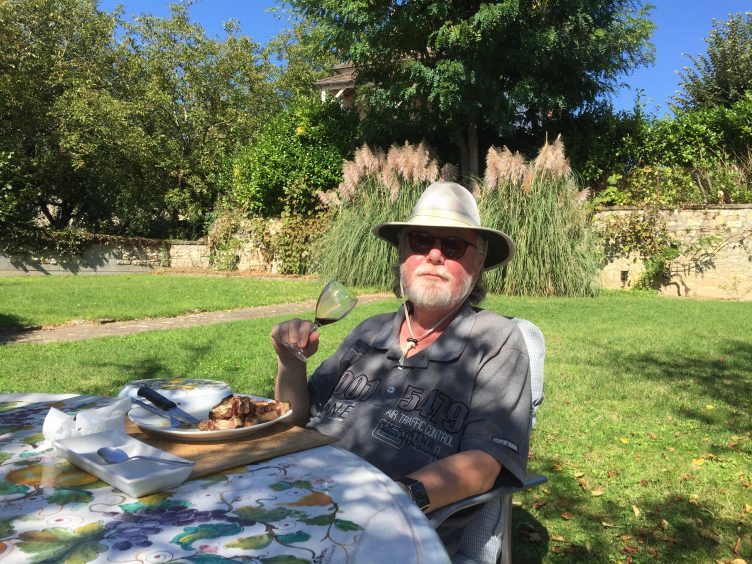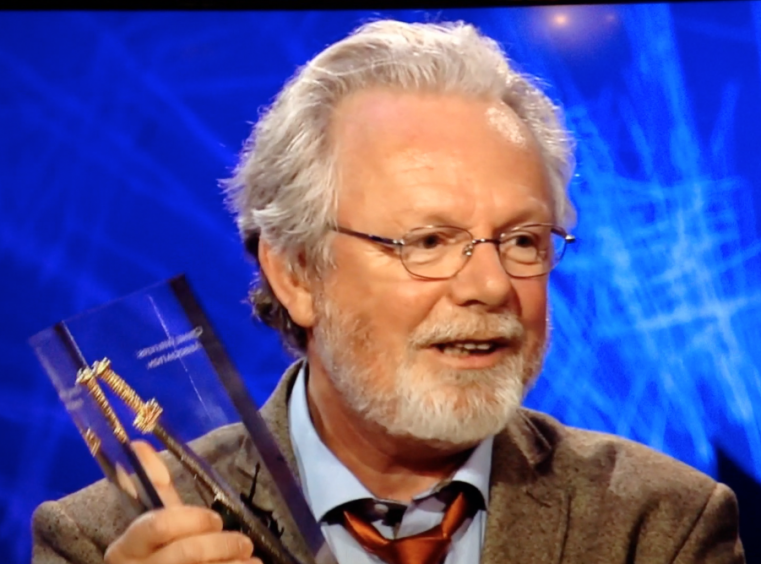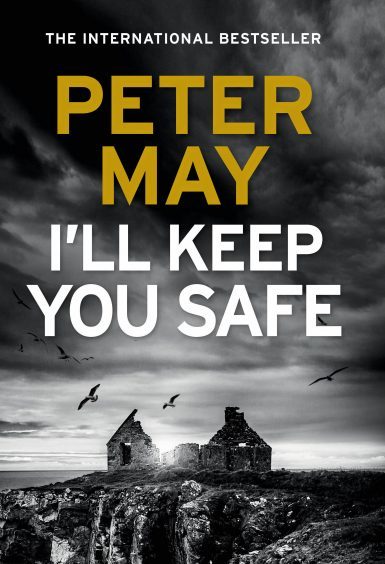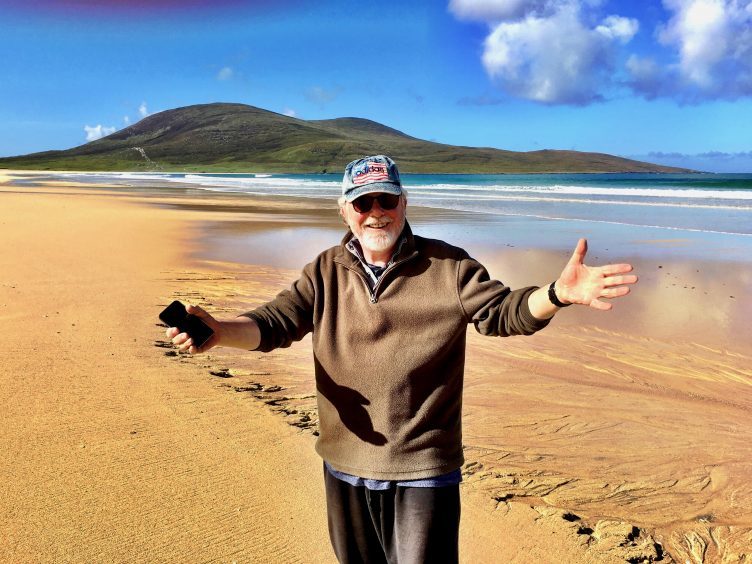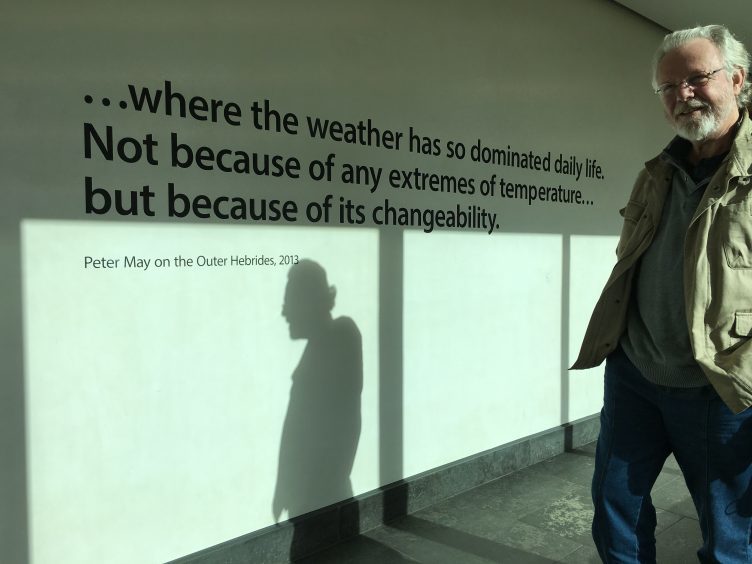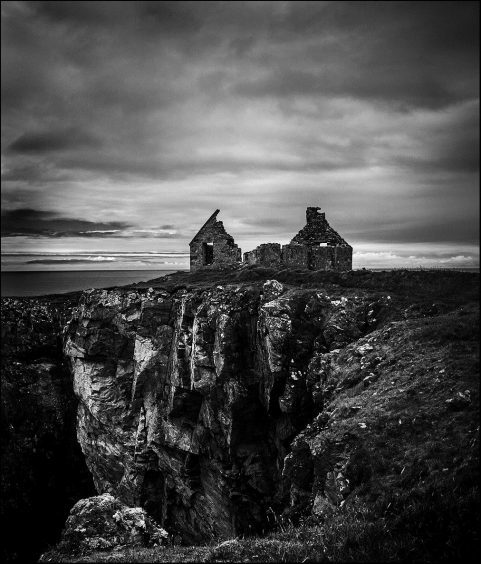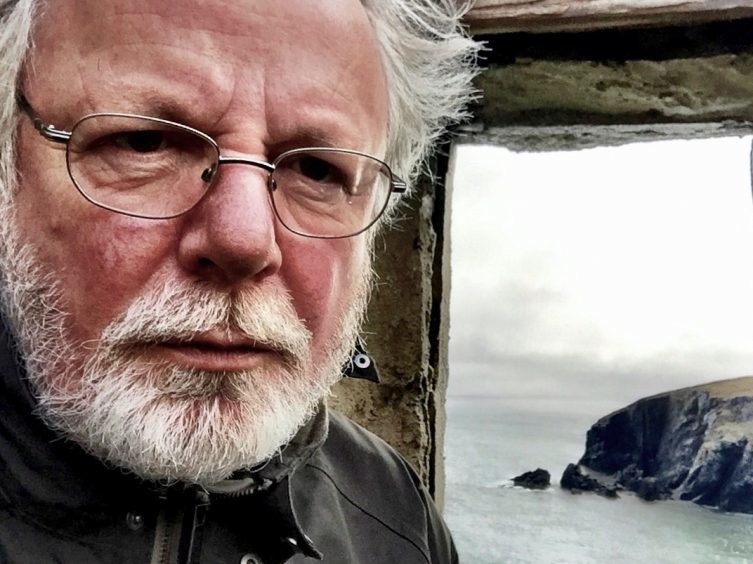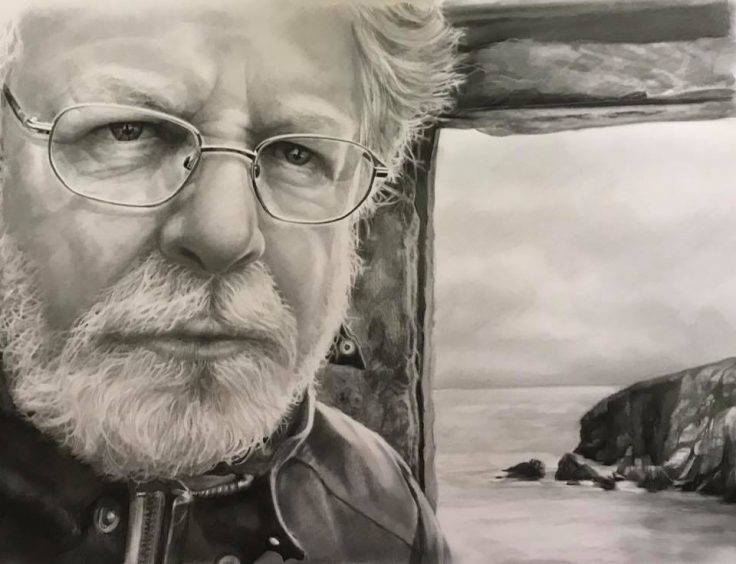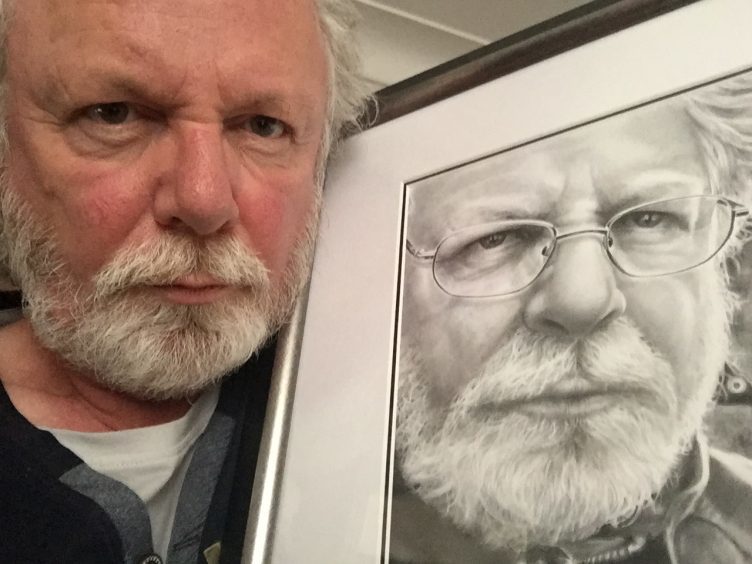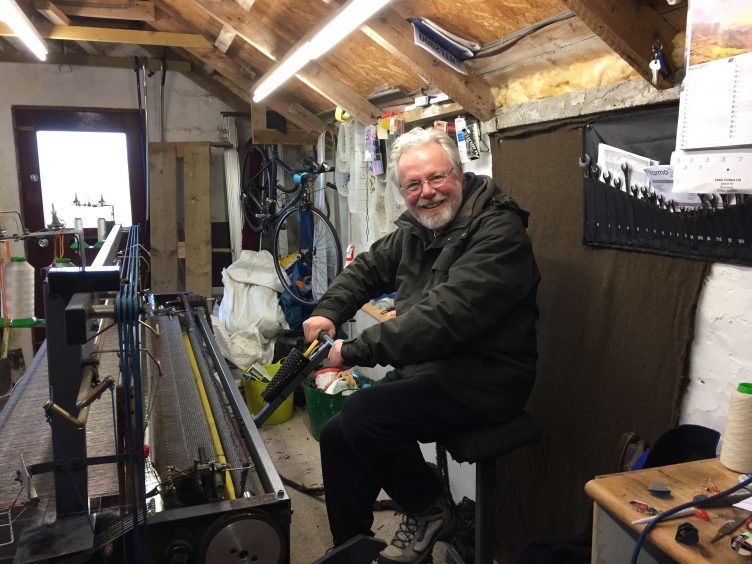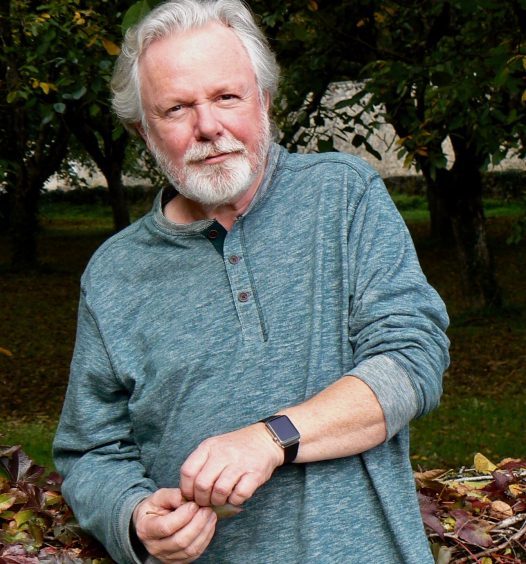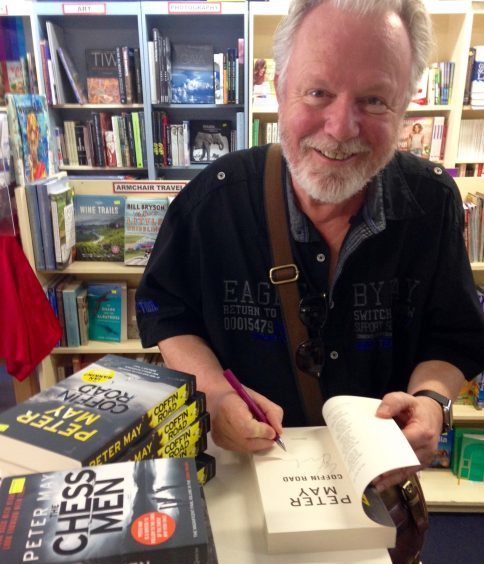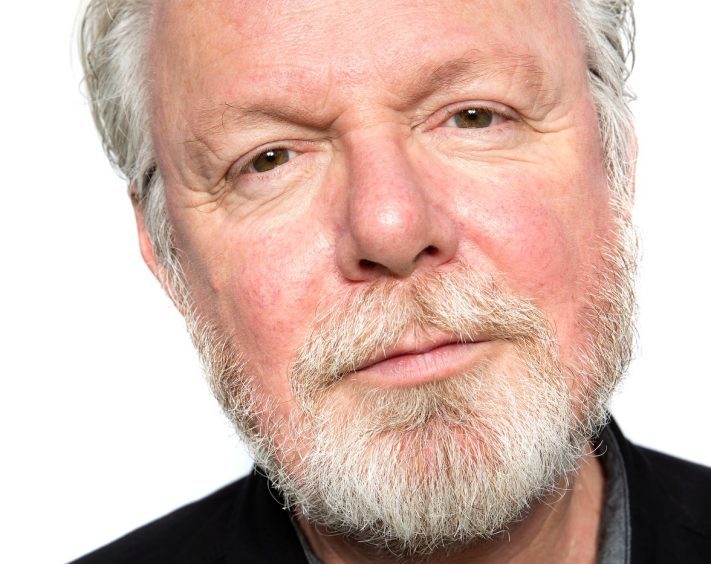Global bestseller Peter May will be talking about his latest book I’ll Keep You Safe in Perth on January 17. Michael Alexander chatted to him about his career, Brexit – and his anger over library closures.
The warm sunshine is streaming through the window of Peter May’s bolthole in the south of Spain as he breaks off from revamping one of his 40-year-old manuscripts to take a call from The Courier.
“Is the snow still falling up there?” he asks of his homeland, revealing that he moved from Scotland to France around 15 years ago and now does most of his writing during the winter months at his Spanish apartment near Gibraltar.
“After 50 odd years living in Scotland it’s just nice to have sunlight,” he laughs when asked why he decided to move.
“Latterly we lived up in Argyll. In winter, I felt I was living my whole life in the darkness.
“So to come down here just to have sun streaming through the window all day – it lifts the spirits you know?”
Born in Glasgow, Peter, now 66, was an award-winning journalist by the age of 21 and went on to write for The Scotsman and the Glasgow Evening Times.
He left newspapers for television and screenwriting, creating three prime-time British drama series and accruing more than 1000 TV credits.
His novels Entry Island (2014), Runaway (2015) and Coffin Road (2016) were all top three Sunday Times bestsellers.
He is published in 30 countries and has sold several million copies worldwide – including The Lewis Trilogy which has sold over five million copies in the UK alone and included his breakthrough novel The Blackhouse.
However, this month he’s back braving the dreich lands of his birth to do a full tour of UK cities – including Perth Theatre on January 17 – to promote his latest novel I’ll Keep You Safe.
The explosive new thriller – set between the Western Isles and mainland Europe – follows a Hebridean couple working in the world of high fashion only for them to become embroiled in the murky world of an extra-marital affair, murder and a killer who will not back down.
“I did a similar event in Perth for my previous book last year in the old St John’s Kirk,” he says.
“We had something like 300 people in there. It was a fantastic turnout. Basically what we have happening this time is (BBC Radio Scotland presenter) Fiona Stalker will chair it like a news interview.
“She’ll grill me about the new book and about my research and approach to writing etc.
“And then at some point it’ll get thrown open to questions from the audience – and very often that’s when it gets really interesting!”
A firm opponent of Brexit which he describes as “absolute insanity”, Peter is well and truly settled in mainland Europe and now has dual French and British nationality.
He “saw Brexit coming” about three years ago and he and his wife started the process of applying for French naturalisation then.
“I think Brexit is just an act of colossal self-harm and Scotland will suffer – there’s no doubt about it,” says the lifelong supporter of Scottish independence who believes the 2014 Scottish independence referendum was an “opportunity lost”.
“I haven’t come across anyone French or Spanish who doesn’t think it’s madness.”
Despite settling in warmer climes, the author never attempts to write about a place he’s not been to. And for his latest novel, this meant trips back to cold, dark, rain-swept Scotland to ensure the accuracy of locations.
“When I’m doing a story set in Scotland, I always go back there to do the research,” says the author who always “tries to not let the words get in the way of the story”.
“For this book I’ll Keep You Safe, I had quite a lot of research to do, because part of the book is set in Paris, so I spent some time there last winter, and went to a big international fabric fair that takes place in Paris twice a year which is the hub of the fashion industry.
“It’s where all the top international designers go twice a year to pick out the materials they are going to use and the clothes they are going to present in their spring and summer shows.
“It’s a huge thing because the story in the book involves Harris Tweed and the Harris Tweed people go there to sell the cloth. It was a fascinating experience.”
Then last March, Peter went up to the Isle of Lewis to do location research there for the Scottish end of the book.
“March up on the Hebrides can be quite brutal – and it was!” he laughs.
“Gale forces winds and lashing rain. It never gets that cold but if you are not dressed for it…the one thing you notice when you step off the plane there is the unrelenting wind!”
It was during that trip that a ruined house was identified for the cover of his book – and it also inspired a tribute by a local artist.
“I had gone on a trek across this moor to find this ruined house and church that stands on a very exposed cliff top,” he explains.
“It’s a long trek to get out there – fortunately I had the right gear with me. It was blowing a hoolie, and I was knackered when I got out there.
“I took this selfie of me in the ruins of the old church. I look grumpy as hell. I put it up on Facebook and this Hebridean artist spotted it and said ‘can I use it as the basis of doing a portrait of you?’
“I said ‘oh it’s a bit grumpy’ but she said ‘oh it’s full of character’. So I said alright. So she did this phenomenal portrait from the photograph which was part of an exhibition in Stornoway in the summer. Then she sent it to me. I’m really chuffed with it.”
For the criminal element, Peter also explored the so-called Dark Web – the flip side of the internet we all know and use.
“Very often in the books I write about subjects that interest me,” he says.
“A couple of books ago I wrote a thing called Coffin Road about the disappearance of bees.
“That had been an ecological subject that interested me. I had a reasonable grounding in that before I started my research.
“The Dark Web I didn’t know a lot about – I’d read about it obviously, so I sort of went plunging in there to see what it was like and talked to a few experts.”
Having started out in his career as a journalist, Peter says research and working to deadlines is something that “comes second nature” to him and they are skills he’s carried on as a writer.
“I enjoy the research almost more than the writing,” he laughs. “It’s taken me all over the world. I’ve seen, heard and done things that most people wouldn’t dream about or have nightmares about!”
It’s been while reviewing the manuscript for his first novel, The Reporter – about an investigative journalist, which he wrote when he was 26 – that he’s come to appreciate the fundamental changes to the process of journalism since his time as a reporter more than 40 years ago.
Despite being a supporter of traditional hard copy books, he’s also a convert to digital – coming to realise the benefits of carrying “100 books on a Kindle” while travelling.
What upsets him greatly, however, is to learn of local library closures in Scotland.
“I think if the human race has a future it is absolutely embedded in education,” he says, recalling his early admiration for writers like Graham Greene, Ernest Hemingway and Irish American JP Donleavey while growing up.
“Literacy is fundamental to education and so the notion that you take away from the current generation, the next generation, the generations to come, the ability to be able to read freely any range of material that they are attracted to whether it’s fiction or non-fiction, is just shocking.
“It’s the death of civilisation and we all need to fight against that.”
Peter has no plans to move back to Scotland. But if he did, he reckons it would be to the Isle of Lewis – an area that has featured so prominently in his books.
“It’s been a huge part of my life for really the past 30 years and although I’m Glasgow born and bred I actually feel much more at home in the Hebrides now than I do in Glasgow,” he says.
“Part of that is because the Glasgow I grew up in doesn’t exist anymore.
“It’s changed almost beyond recognition.
“But every time you go back to the Hebrides nothing has changed.
“It’s almost the same as it was 30 years ago so there’s a fantastic sense of comfort and feeling at home about going back.
“So if we ever were to go back – and it is something my wife and I have talked about – that’s definitely where we would go.”
- An Evening with Peter May takes place at Perth Theatre on Wednesday January 17. For ticket information go to horsecross.co.uk
